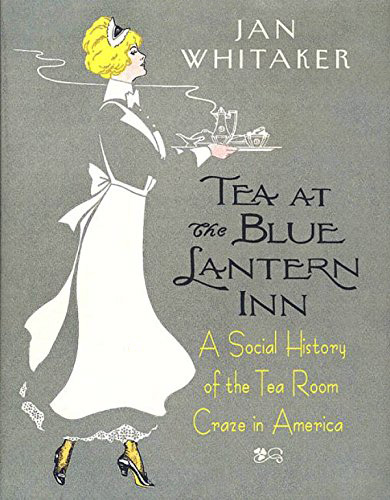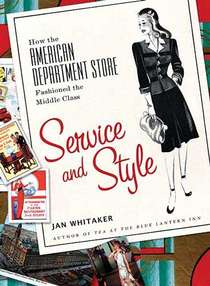 Ludwig Bemelmans, well known author and illustrator of the Madeline books for children, began his life in the United States in hotel food service. In the book Life Class (1938), he reveals how perceptive an observer he was of the workings of a deluxe hotel’s dining operations in the early decades of the 20th century.
Ludwig Bemelmans, well known author and illustrator of the Madeline books for children, began his life in the United States in hotel food service. In the book Life Class (1938), he reveals how perceptive an observer he was of the workings of a deluxe hotel’s dining operations in the early decades of the 20th century.
With a few strokes, he paints a vivid portrait of the “Hotel Splendide,” otherwise known as the Ritz-Carlton on Madison Avenue between 46th & 47th streets in New York. The hotel was part of a worldwide chain of luxury hotels that defined “ritziness” by providing fine food and service that attracted people of wealth and social status, some with aristocratic titles that dazzled wealthy Americans. [shown above, Palm Court, 1914]
 Bemelmans arrived in this country from Rotterdam in December, 1914, with letters of introduction from his European hotelier uncle. He was only 16 years old, but with a troubled past. Had he been from a family of lesser stature he might well have been classed as a juvenile delinquent. He had a rocky start in New York, too; he was fired by the first two hotels that hired him in New York, the Astor and the McAlpin. But, despite some perilous incidents at the Ritz, he managed to hang on there for years, working in the restaurant, the café, and the banquet department before leaving for a career as an artist and author around the late 1920s.
Bemelmans arrived in this country from Rotterdam in December, 1914, with letters of introduction from his European hotelier uncle. He was only 16 years old, but with a troubled past. Had he been from a family of lesser stature he might well have been classed as a juvenile delinquent. He had a rocky start in New York, too; he was fired by the first two hotels that hired him in New York, the Astor and the McAlpin. But, despite some perilous incidents at the Ritz, he managed to hang on there for years, working in the restaurant, the café, and the banquet department before leaving for a career as an artist and author around the late 1920s.
In Life Class he frequently observes how the hotel’s gatekeepers sorted out patrons by social class. The hotel’s restaurant manager, Monsieur Victor, “knew who was in Society, who was almost in Society, and, what is most important, who was not” and treated them accordingly. Those with the highest status gave him no tips or honor, but at the other end of the social spectrum he collected handsome tolls from those who wanted a decent table. Bemelmans judged that Victor took in a fabulous sum for that time, about $40,000 a year.
 However, those who slipped Victor a too-small bill found themselves among the “untouchables” seated at an awkward table near a service station or in a drafty corner. Although Bemelmans can be warmly egalitarian about the hotel’s staff, he can be as dismissive as Victor when describing guests. Among the untouchables are “Westchester housewives in gray squirrel coats and galoshes on rainy days. They order an oeuf Bénédict and a glass of milk before going to a matinee.” A woman who he imagines is “the wife of some street-car magnate,” he writes, is “dressed with costly despair.”
However, those who slipped Victor a too-small bill found themselves among the “untouchables” seated at an awkward table near a service station or in a drafty corner. Although Bemelmans can be warmly egalitarian about the hotel’s staff, he can be as dismissive as Victor when describing guests. Among the untouchables are “Westchester housewives in gray squirrel coats and galoshes on rainy days. They order an oeuf Bénédict and a glass of milk before going to a matinee.” A woman who he imagines is “the wife of some street-car magnate,” he writes, is “dressed with costly despair.”
Faring worse than the untouchables were “innocents” who didn’t understand how things worked at all, such as those who “just walked in off the street, thinking that this was a restaurant.” They were soundly humiliated and turned away with great haughtiness by Monsieur Victor who then watched them depart “with the detachment of a bullfighter who has done his routine work and waits until the horses have dragged the animal out, ready to start on the next.”
 Since I have always thought that hotels were among the most likely businesses to follow Prohibition laws, I was surprised how much trade the Ritz did with bootleggers in the 1920s. Bemelmans explains that banquets were furnished with high quality alcohol from the “most reputable bootleggers” who delivered cases clearly marked Champagne and Whisky during the daytime while the police blandly looked on. More surprising, the police did not demand a payoff, settling instead for a few late-night drinks and leftover food after banquets ended, along with maybe a couple of bottles at Christmas.
Since I have always thought that hotels were among the most likely businesses to follow Prohibition laws, I was surprised how much trade the Ritz did with bootleggers in the 1920s. Bemelmans explains that banquets were furnished with high quality alcohol from the “most reputable bootleggers” who delivered cases clearly marked Champagne and Whisky during the daytime while the police blandly looked on. More surprising, the police did not demand a payoff, settling instead for a few late-night drinks and leftover food after banquets ended, along with maybe a couple of bottles at Christmas.
The serving staff was expert at squirreling away food and drinks in their own private icebox for later use. In some cases they cleverly “rescued” cases of booze during parties, yet still received lavish tips from satisfied guests who had paid for far more wine than they consumed. As the manager remarked, the banquet business at the Ritz was a “goldmine.”
 Even while in the midst of serving, waiters managed to enjoy delectable snacks. They snatched “little fried things” such as scallops, frogs’ legs, and fried potatoes from serving platters and ate them in the middle of the dining room without anyone noticing. According to Bemelmans, they had “learned to eat so that their cheeks and jaws do not move.”
Even while in the midst of serving, waiters managed to enjoy delectable snacks. They snatched “little fried things” such as scallops, frogs’ legs, and fried potatoes from serving platters and ate them in the middle of the dining room without anyone noticing. According to Bemelmans, they had “learned to eat so that their cheeks and jaws do not move.”
After he left the Ritz-Carlton, the epicurean Bemelmans stayed closely connected to fine food and restaurants. He painted murals for several restaurants, illustrated menus and wine cards, depicted them in advertisements and on New Yorker covers, and owned or was closely associated with four places (all of which may be the subject of a future post).
© Jan Whitaker, 2019


 It's great to hear from readers and I take time to answer queries. I can't always find what you are looking for, but I do appreciate getting thank yous no matter what the outcome.
It's great to hear from readers and I take time to answer queries. I can't always find what you are looking for, but I do appreciate getting thank yous no matter what the outcome.



Just finished “Hotel Bemelmens”. I thoroughly enjoyed his writing and the hilarious descriptions 🍴Looking for more.
Many thanks Jan, a fascinating social history, and this is a book that I shall enjoy in prospect. I’ve slowly been piecing together my paternal grandfather’s life story, and we possess a Ritz-Carlton photograph of the waiters, with seventeen years old Attilio Baruffati among them, perhaps in preparation for the newly opened hotel. A maître d’hôtel stands with his charges. No other facts are known of his time there. I have been keen to get an understanding of his life in New York, so this book should be of enormous help! Attilio arrived via Ellis Island (26th April 1910), and stayed, presumably until around 1916, when he was given the choice of fighting with the US Army, or returning to Italy to fight against the Austro-Hungarians. He chose the latter, and in 1918, with the war ended, the Spanish flu would prevent his return, although I do not know if he wanted to.
I hope you can learn more.
Tom, do you have the photo posted anywhere? I believe a family member to also be in that photo.
Hello anon,
Let me know a way to let you get sight of it, and I shall put it out there!
Hello anon,
Let me know a way to let you get sight of it, and I shall put it out there!
Jan, the booze flowed freely pretty much everywhere during the Dark Days of the 18th Amendment. It’s no surprise that the swanky places had the best alcohol — at the highest prices!
Loving it..always!!
My daughter loved the Madeline books when she was young, I read them to her over and over again; however I had no idea he had a whole other side to his life. As ever you deliver fascinating information in your posts!
On another note entirely, it was one of your posts that made me aware of ‘The Green Book’, and I have just received an invitation to a private showing of the film here in Beijing (it is unlikely to go on general release here in China). Have you seen the movie, and if so, what did you make of it?
I haven’t seen it so far. It got some poor reviews but then won best film, so it’s hard to know what to think.
Wonderful, as always, Jan. Thank you!
Anne
I enjoyed the Bemelmans stories. She’s very entertaining. Thanks xxxxM
On Sun, Feb 24, 2019 at 9:03 AM Restaurant-ing through history wrote:
> Jan Whitaker posted: “Ludwig Bemelmans, well known author and illustrator > of the Madeline books for children, began his life in the United States in > hotel food service. In the book Life Class (1938), he reveals how > perceptive an observer he was of the workings of a deluxe hote” >
Bemelmans was still in residence on the planet when I was young, and we had a Pocket Book collection of his short stories, called “Small Beer.” As much as I enjoy his fiction, his autobiography is a wonderfully warm (sometimes hot!) and human thing; occasionally snobby, yes, but he was a welcoming observer of every sort of human foible, including his own. And now I want to read it again!
He is very enjoyable to read, and I love his drawings.